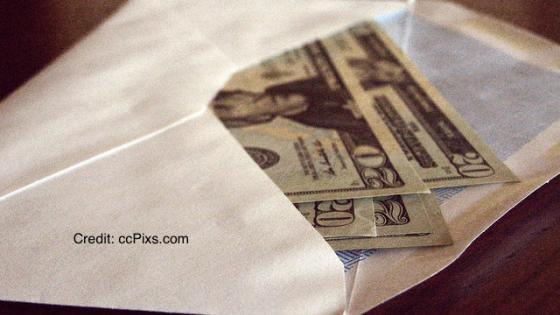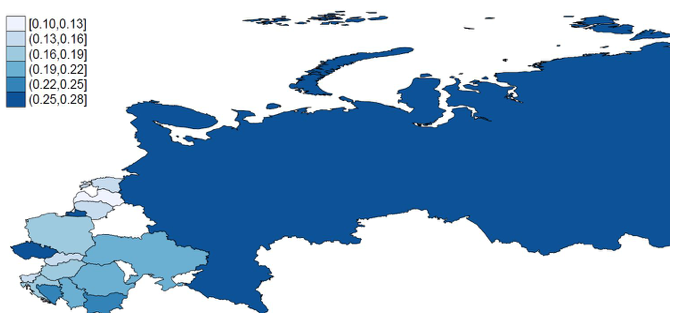The idea that corruption hinders investments is not new, but rather is already well documented (Mauro 1995). However, the existing literature has solely examined the impact of average country-level corruption indices on investments. This is not fully consistent with how corporations make decisions. When corporations make forward-looking decisions like investments, expected levels of corruption are incorporated into the decision-making process, and therefore corporations worry more about uncertainties. Seminal theories thus focus on the impact of uncertainties on investments (Dixit and Pindyck 1994) – whose predictions are supported by notable empirical studies such as Leahy and Whited (1996), who find that general economic overall uncertainty lowers firm investment – and Bloom et al. (2007), who show that uncertainty with (partial) irreversibility reduces corporate investments. Recent works continue the exploration of the impact of uncertainties to understand further the extent to which they matter. Gulen and Ion (2016) find that corporate investments are lower when uncertainty about policy is higher in the US. Kim and Kung (2017) show that, as uncertainty increases, firms using fewer re-deployable assets reduce investments more than firms using more of them.
In a recent paper, we continue to explore the relationships between uncertainty and corporate investments, and focus specifically on corruption uncertainty (Hanousek at al.2017b). Measuring the portion of overall uncertainty attributable to corruption uncertainty is challenging. The difficulties are determined not only by the elicit nature of corrupt activities, but also by the availability of data. Our efforts join recent attempts to create a more granular corruption variable from the Business Environment and Enterprise Performance Survey (BEEPS) (Hanousek et al. 2017a, Hanousek and Kochanova 2016). BEEPS is an anonymous survey of firms from Central and Eastern Europe about local business practices, created in part by the World Bank Enterprise Survey (WBES) and in part by the European Bank for Reconstruction and Development (EBRD). It is known to be the most detailed source of data on corruption practices (Svensson 2003). Our corruption uncertainty measure reflects the variation in perception of corruption in a given environment (see Hanousek at al. 2017 for more details).
Investing under corruption uncertainty
Our final dataset contains more than 140,000 firm-level observations for 13 Central and Eastern European countries, from 2001 to 2013. Our results show that increasing corruption uncertainty has a negative impact on corporate investments. We also control for general economic uncertainty and corruption levels. The result holds – higher corruption is still associated with a decrease in investment. The results are not sensitive to alternative research designs, subsamples, and additional controls. High dispersion in corruption perception indicates high uncertainty about the corruption level in an environment.
Overall, we find, on average, that corruption uncertainty negatively impacts corporate investments. The higher the perception of corruption dispersion, the lower the invested capital. Nevertheless, these results are sensitive to the ownership structure of the firm. While domestically controlled firms scale back their investments when corruption uncertainty increases, firms with a foreign controlling owner are unaffected by the corruption uncertainty factor. There could be several reasons for this. First, when entering foreign markets, firms that want to remain foreign-controlled might interact with local government agencies/officials to settle any uncertainty. Second, since foreign firms are the subject of strict anti-bribery regulation (e.g. the US Foreign Corrupt Practices Act, the UK Bribery Act, and the OECD Convention on Combating Bribery of Foreign Public Officials in International Business Transactions) they self-select into environments where corruption uncertainty does not affect their business. These effects might seem to be indistinguishable from each other but, given that we control for firm fixed effects, it seems plausible that when foreign firms enter markets in which they want to hold the controlling hand, they self-select into industries where no corruption uncertainty exists – i.e. there is no variation in our corruption measure. Basic summary statistics would indicate that this is the case, as one can see from our paper.
Figure 1 Mean corruption uncertainty in 2012
Source: BEEPS data, authors’ computation. We acknowledge use of © EuroGeographics for the administrative boundaries for creating the map
Uncertainty lowers investments, but what happens to the uninvested cash?
Typically, the decrease in investments is accompanied by an increase in cash holdings. We therefore further study the impact of corruption uncertainty on cash holdings. We find that the relationship is negative. Uncertainty usually dictates that companies hold more cash to protect themselves against adverse shocks. However, the bribery channel is also cash. Our results indicate that companies lower cash holdings on the balance sheet when corruption uncertainty increases. We hypothesise that the reason for this is that corporations need to build more off-balance sheet cash reserves to be prepared for the increased uncertainty about the misuse of bureaucratic power. The sensitivity of the ownership levels mirrors the results from the investment models. Only firms whose investment decision is affected by the corruption uncertainty respond by adjusting their cash holding.
Our results have several implications. First, they suggest that uncertainty about the corruption level can be even more harmful for the firm-level investments than high corruption itself. Second, our results indicate that firms have different sensitivity to corruption-induced uncertainty – different firms are affected to different degrees. Notably, majority-controlled foreign firms seem not to be sensitive to uncertainty. Third, corruption uncertainty implications for firms’ cash holdings open a fruitful avenue for further research. On the one hand, the decrease in cash holdings could be due to their expropriation by the majority shareholder. On the other hand, these off-balance sheet funds could be used to meet the demands of corrupt officials.
References
Mauro, P (1995), “Corruption and Growth*”, The Quarterly Journal of Economics, 110(3): 681-712.
Dixit, A K, and R S Pindyck (1994), Investment under uncertainty, Princeton University Press.
Leahy, J V, and T M Whited (1996), “The effect of uncertainty on investment: Some stylized facts”, Journal of Money, Credit and Banking, 28(1): 64-83.
Bloom, N, S Bond, J and Van Reenen (2007), “Uncertainty and Investment Dynamics”, The Review of Economic Studies, 74(2): 391-415.
Gulen, H, and M Ion (2016), “Policy uncertainty and corporate investment”, Review of Financial Studies, 29(3): 523-564.
Kim, H, and H Kung (2017), “The Asset Redeployability Channel: How Uncertainty Affects Corporate Investment”, The Review of Financial Studies, 30(1): 245-280.
Hanousek, J, A Shamshur, and J Tresl (2017a), “Firm efficiency, foreign ownership and CEO gender in corrupt environments”, Journal of Corporate Finance, 2017.
Hanousek, J, A Shamshur, and J Tresl (2017b), “To bribe or not to bribe? Corruption uncertainty and corporate practices”, CEPR Discussion Paper 12094.
Hanousek, J, and A Kochanova (2016), “Bribery environments and firm performance: Evidence from CEE countries”, European Journal of Political Economy, 43, 14-28.
Svensson, J (2003), “Who must pay bribes and how much? Evidence from a cross section of firms”, The Quarterly Journal of Economics, 118(1): 207-230.







